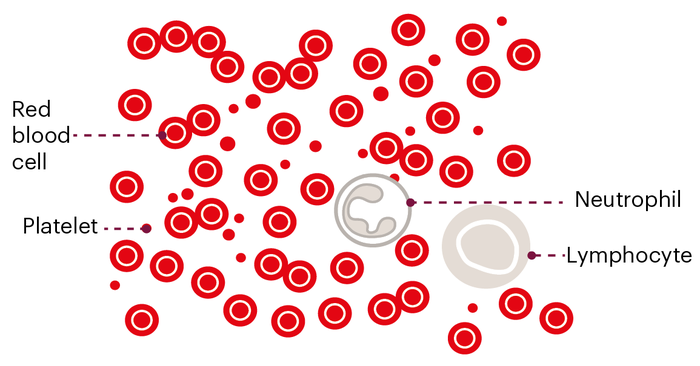Myelodysplastic syndromes (MDS) symptoms and diagnosis
Myelodysplastic syndromes (MDS) tests for diagnosis
There are two main tests used to diagnose MDS – a full blood count and a bone marrow biopsy.
Full blood count
A full blood count is a blood test that measures the number of blood cells in your blood. In MDS, you will have low numbers of some types of blood cell.
A sample of blood will be taken and this will be put onto a slide under a microscope, called a blood film. If your blood film suggests MDS, you will usually be referred to a blood specialist (haematologist).
Low blood counts can be caused by many conditions, so the doctor will ask you general health questions and give you a physical examination to rule out other causes.

Normal blood film diagram

Abnormal blood film diagram
Bone marrow biopsy
Your bone marrow is a spongy material found inside some of your bones. It is where blood cells are made. As MDS is a disease of the bone marrow, a bone marrow biopsy is usually needed to diagnose it. In a bone marrow biopsy, a sample of bone marrow is removed, often from the pelvis, and looked at under a microscope. It can take two to three weeks to get your results.
Genetic tests
Additional tests are also often done on the sample, to make the diagnosis and give more information about how the condition will behave (prognosis). These tests include genetic tests such as cytogenetics (or ‘karyotype’ tests, which look at changes to chromosomes) and molecular tests (which look at DNA mutations). These tests can give a more precise diagnosis and help make treatment more personalised.
Unclear results
If the bone marrow changes in your sample are not clear and there is doubt about whether or not you have MDS, your doctor may decide to monitor your blood counts and repeat the bone marrow test at a later stage.

Worried about anything or have questions?
If you have any questions, worries, or just need someone to talk to, please don't hesitate to contact our Support Service by phone or email.
